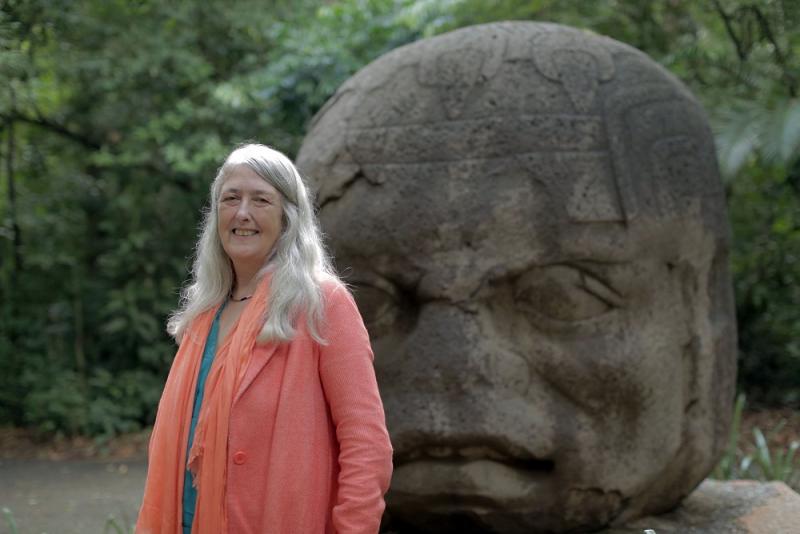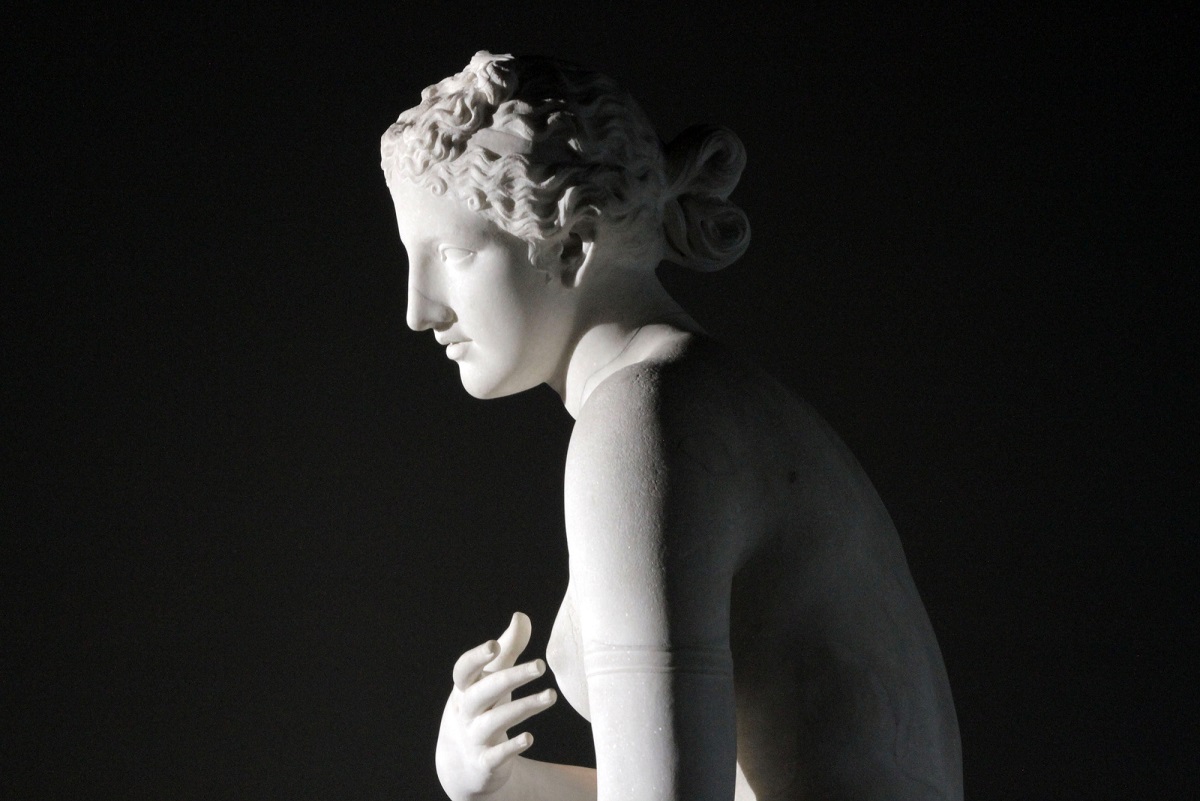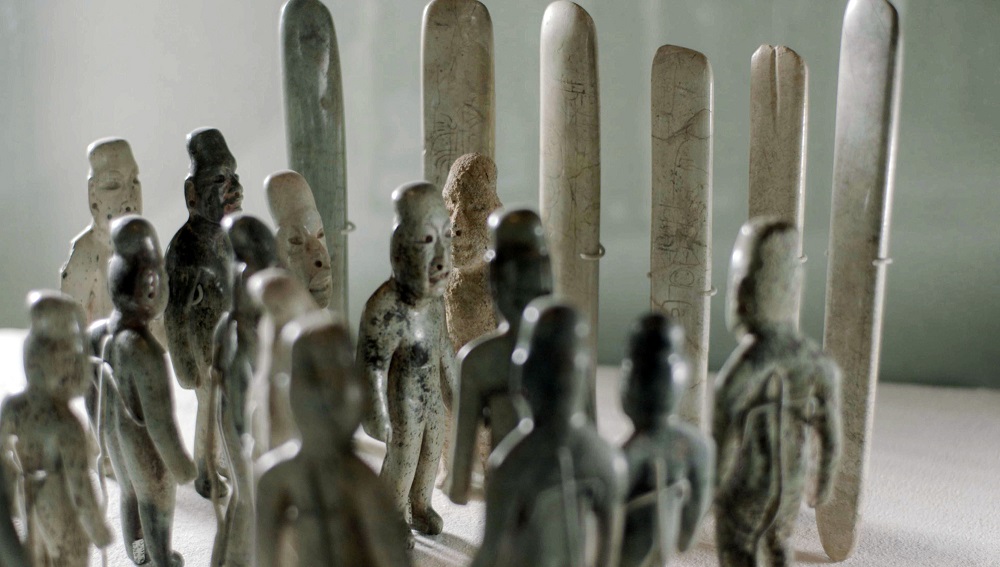Civilisations, episode 2, BBC Two review - Mary Beard on the cultural offensive | reviews, news & interviews
Civilisations, episode 2, BBC Two review - Mary Beard on the cultural offensive
Civilisations, episode 2, BBC Two review - Mary Beard on the cultural offensive
Images of the human form investigated, from classical Europe to Mexico, China

The sheer ambition of the BBC’s new Civilisations is becoming apparent.
It wasn’t as huge a journey, in either its thousands of miles or years, as Schama’s opener, so brought home the difficulties of making comparisons and reaching conclusions across non-related cultures all the more acutely. The triune territory of Ancient Egypt, Greece and Rome must surely be Beard’s home ground, and its contiguity and consecutive development allows, even encourages pursuing themes between cultures. When you throw in another culture from halfway across the planet, the risk is that you start passing value judgements across what are the essentially incomparable, metaphorical apples and oranges of what has come down to us from such past worlds.
We wonder whether the introduction of micro-knowledge would get in the way of the grand statement It also raises the issue of just what we really know about these worlds (if Civilisations is seeking an epitaph, Einstein’s “The more I learn, the more I realise how much I don’t know” would fit). Tackling the "Greek revolution" in sculpture, that key moment in history (and her argument) when representation of the human form moved from totemic-hieratic to humanist-representational, and what inspired it, Beard was honest enough to admit she didn’t have an answer. Might it have been related to the rise of democracy, or simply that the sculptors got better over a short 200 years? “In truth, we don’t know.”
If we accept such an admission – from an eminent classicist, about her specialist field – how much more striking it seems when Beard confronts worlds that are much further beyond her ken. “It really is big,” was her distinctly monolithic response to that huge Olmec head with which “How Do We Look?” opened (main picture), its details, from lips to irises, lovingly described, the rising purple in the prose almost embarrassing. The bigger questions – how? why? – weren’t even tackled. Another, more familiar type of documentary would at this point have popped in a couple of experts to give even basic context, but Civilisations isn’t taking such outside advice. There may be many reasons for that – including how much longer it would end up going on – but we may also wonder whether the introduction of such micro-knowledge would get in the way of the kind of grand statement being issued, almost Delphically, by the implied stately fount of contemporary cultural knowledge (read, a BBC Arts huddle, Schama to centre?). Because grand statements, like Beard’s opening “When civilisations first made art, they made it about us”, its last word typically stressed, are all over the piece. The proviso that Islamic art has never typically engaged with representation aside, how do they hold together when your frame of reference includes the Fayum portraits of Egypt (as intimately contemporary in a “realism” sense as anything), the idealised forms (more often male than female, and certainly beauty-centric in priority, the “flat and the flabby” excluded from the canon: pictured above, Aphrodite of Menophantos, Praxiteles, 4th century BCE, Palazzo Massimo alle Terme, Rome) of the classical world, and the terracotta figures of China, not true portraits but “likenesses of no-one”, their variations of features driven by some sort of factory technique (and anyway intended to be buried, thus never on display to any viewer)?
Because grand statements, like Beard’s opening “When civilisations first made art, they made it about us”, its last word typically stressed, are all over the piece. The proviso that Islamic art has never typically engaged with representation aside, how do they hold together when your frame of reference includes the Fayum portraits of Egypt (as intimately contemporary in a “realism” sense as anything), the idealised forms (more often male than female, and certainly beauty-centric in priority, the “flat and the flabby” excluded from the canon: pictured above, Aphrodite of Menophantos, Praxiteles, 4th century BCE, Palazzo Massimo alle Terme, Rome) of the classical world, and the terracotta figures of China, not true portraits but “likenesses of no-one”, their variations of features driven by some sort of factory technique (and anyway intended to be buried, thus never on display to any viewer)?
Then throw in the fact that Beard’s examples here are essentially societies where religion appears not to be a determining factor (she will be tackling “The Eye of Faith” in episode four). Tramp your way around the forest temple complexes of South Eastern and Southern Asia, and you might construct any number of alternative hypotheses to back another theory. The fault of Civilisations’ attempt at central unifying narrative is that it doesn’t allow the differences of each individual world to speak for themselves. (Pictured below: Olmec Jade Figurines, c. 600-200 BCE, Museo Nacionale de Anthropologia, Mexico City) Which is all very well until you start asserting new value judgments over old ones in the way that seems implicit in the addition of that plural to the series title. There were alarming early shots here of Beard presenting to camera against a background of what looked like explosions, as if she was inadvertently caught up in some of the cultural vandalism that opened episode one. In fact, she was at a marble quarry on Naxos, where at one point a huge, unexcavated totemic form that had never left its point of origin became an “extremely nice place to sit” – the kind of cosy aside I’m not certain that we need from a presenter, even one whose style is notably less formal than Schama’s (she certainly preferred to take the weight off her feet).
Which is all very well until you start asserting new value judgments over old ones in the way that seems implicit in the addition of that plural to the series title. There were alarming early shots here of Beard presenting to camera against a background of what looked like explosions, as if she was inadvertently caught up in some of the cultural vandalism that opened episode one. In fact, she was at a marble quarry on Naxos, where at one point a huge, unexcavated totemic form that had never left its point of origin became an “extremely nice place to sit” – the kind of cosy aside I’m not certain that we need from a presenter, even one whose style is notably less formal than Schama’s (she certainly preferred to take the weight off her feet).
But Beard then performed a closing act of iconoclasm of her own, a rebuke to poor old Sir Kenneth, traduced, via Winckelmann and the Apollo Belvedere, with all the “narrow way of seeing” that this new Civilisations is out to overthrow (Clark even got televisually exhumed for a few seconds of his series to remind us how very old-fashioned it all looked). Since chucking out one kind of intolerant absolutism about cultural value only to put another in its place is not very appealing, I hope Beard wasn’t just replacing the Syon House Apollo with the primitivism (my loaded word) of the “Olmec Wrestler” (which may or may not be a wrestler, and may not even be Olmec at all).
Was director Matthew Hill overpaying homage to Terrence Malick with all those poetic tree shots?
It rather left the impression that if a plural needed to be added anywhere in Civilisations, it could have gone into the subtitle of Clark’s original, “A Personal View”. For Civilisations is surely a collection of personal views – that may reveal (sometimes profoundly) new insight, at the same time as they stimulate disagreement. Indeed, that latter reaction may even be the more dynamic and productive one.
Technically, it was as grandiosely impressive as some of the structures it surveyed. I’ll disagree with a colleague and say that the spare, string-dominated score here from Tandis Jenhudson seemed as good a piece of screen accompaniment as could be imagined. Was director Matthew Hill overpaying homage to Terrence Malick with all those poetic tree shots? He certainly took advantage of some nifty slow motion opps, at one point enveloping Beard in floating drapery not unlike the Greek sculpture she was studying – some slo-mo cigarette lighting and coin flipping that introduced us to China looked redundant stylistic showing-off, though – as well as sped-up collage cuts as we moved between eras. It's as energetically contemporary as the Clark original now looks dated. But take a cautionary, relativistic final reminder, perhaps, from Ozymandias, whose metaphorical presence somehow looms large in Civilisations. All will pass.
Add comment
The future of Arts Journalism
You can stop theartsdesk.com closing!
We urgently need financing to survive. Our fundraising drive has thus far raised £49,000 but we need to reach £100,000 or we will be forced to close. Please contribute here: https://gofund.me/c3f6033d
And if you can forward this information to anyone who might assist, we’d be grateful.

Subscribe to theartsdesk.com
Thank you for continuing to read our work on theartsdesk.com. For unlimited access to every article in its entirety, including our archive of more than 15,000 pieces, we're asking for £5 per month or £40 per year. We feel it's a very good deal, and hope you do too.
To take a subscription now simply click here.
And if you're looking for that extra gift for a friend or family member, why not treat them to a theartsdesk.com gift subscription?
more TV
 The Diplomat, Season 3, Netflix review - Ambassador Kate Wyler becomes America's Second Lady
Soapy transatlantic political drama keeps the Special Relationship alive
The Diplomat, Season 3, Netflix review - Ambassador Kate Wyler becomes America's Second Lady
Soapy transatlantic political drama keeps the Special Relationship alive
 The Perfect Neighbor, Netflix review - Florida found-footage documentary is a harrowing watch
Sundance winner chronicles a death that should have been prevented
The Perfect Neighbor, Netflix review - Florida found-footage documentary is a harrowing watch
Sundance winner chronicles a death that should have been prevented
 Murder Before Evensong, Acorn TV review - death comes to the picturesque village of Champton
The Rev Richard Coles's sleuthing cleric hits the screen
Murder Before Evensong, Acorn TV review - death comes to the picturesque village of Champton
The Rev Richard Coles's sleuthing cleric hits the screen
 Black Rabbit, Netflix review - grime and punishment in New York City
Jude Law and Jason Bateman tread the thin line between love and hate
Black Rabbit, Netflix review - grime and punishment in New York City
Jude Law and Jason Bateman tread the thin line between love and hate
 The Hack, ITV review - plodding anatomy of twin UK scandals
Jack Thorne's skill can't disguise the bagginess of his double-headed material
The Hack, ITV review - plodding anatomy of twin UK scandals
Jack Thorne's skill can't disguise the bagginess of his double-headed material
 Slow Horses, Series 5, Apple TV+ review - terror, trauma and impeccable comic timing
Jackson Lamb's band of MI5 misfits continues to fascinate and amuse
Slow Horses, Series 5, Apple TV+ review - terror, trauma and impeccable comic timing
Jackson Lamb's band of MI5 misfits continues to fascinate and amuse
 Coldwater, ITV1 review - horror and black comedy in the Highlands
Superb cast lights up David Ireland's cunning thriller
Coldwater, ITV1 review - horror and black comedy in the Highlands
Superb cast lights up David Ireland's cunning thriller
 Blu-ray: The Sweeney - Series One
Influential and entertaining 1970s police drama, handsomely restored
Blu-ray: The Sweeney - Series One
Influential and entertaining 1970s police drama, handsomely restored
 I Fought the Law, ITVX review - how an 800-year-old law was challenged and changed
Sheridan Smith's raw performance dominates ITV's new docudrama about injustice
I Fought the Law, ITVX review - how an 800-year-old law was challenged and changed
Sheridan Smith's raw performance dominates ITV's new docudrama about injustice
 The Paper, Sky Max review - a spinoff of the US Office worth waiting 20 years for
Perfectly judged recycling of the original's key elements, with a star turn at its heart
The Paper, Sky Max review - a spinoff of the US Office worth waiting 20 years for
Perfectly judged recycling of the original's key elements, with a star turn at its heart
 The Guest, BBC One review - be careful what you wish for
A terrific Eve Myles stars in addictive Welsh mystery
The Guest, BBC One review - be careful what you wish for
A terrific Eve Myles stars in addictive Welsh mystery
 theartsdesk Q&A: Suranne Jones on 'Hostage', power pants and politics
The star and producer talks about taking on the role of Prime Minister, wearing high heels and living in the public eye
theartsdesk Q&A: Suranne Jones on 'Hostage', power pants and politics
The star and producer talks about taking on the role of Prime Minister, wearing high heels and living in the public eye

Comments
Oh dear me. Mary Beard
Not only is Professor Beard's